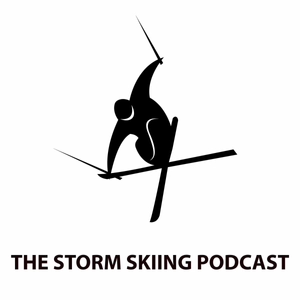
The Storm Skiing Journal and Podcast
Stuart Winchester
www.stormskiing.com


3 Listeners
All episodes
Best episodes
Top 10 The Storm Skiing Journal and Podcast Episodes
Goodpods has curated a list of the 10 best The Storm Skiing Journal and Podcast episodes, ranked by the number of listens and likes each episode have garnered from our listeners. If you are listening to The Storm Skiing Journal and Podcast for the first time, there's no better place to start than with one of these standout episodes. If you are a fan of the show, vote for your favorite The Storm Skiing Journal and Podcast episode by adding your comments to the episode page.
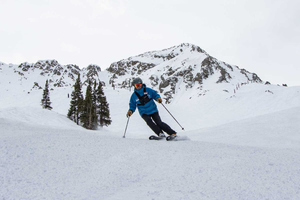
Podcast #82: Arapahoe Basin Chief Operating Officer Alan Henceroth
The Storm Skiing Journal and Podcast
04/14/22 • -1 min
To support independent ski journalism, please consider becoming a free or paid subscriber. Upgrading to a paid subscription is the only way to guarantee access to 100% of The Storm’s content.
Who
Alan Henceroth, Chief Operating Officer of Arapahoe Basin, Colorado
Recorded on
April 12, 2022
About Arapahoe Basin
Click here for a mountain stats overview
Owned by: Dundee Resort Development
Base elevation: 10,520 feet
Summit elevation: 13,050 feet
Vertical drop: 2,530 feet
Skiable Acres: 1,428
Average annual snowfall: 350 inches
Trail count: 147 (24% double-black, 49% black, 20% intermediate, 7% beginner)
Lift count: 9 (2 high-speed quads, 2 fixed-grip quads, 1 triple [to be replaced with a high-speed six-pack this summer], 1 double, 2 carpets, 1 J-tow - view Lift Blog’s inventory of Arapahoe Basin’s lift fleet)
Uphill capacity: 11,300 skiers per hour
Why I interviewed him
The Legend. Ski area taglines are typically rocket fuel for The Storm’s wiseass machine, but this one fits. Hard against the Continental Divide, Arapahoe Basin is the third-highest ski area in America, trailing only Monarch (10,790 feet) and Loveland (10,800) at its base, and Telluride (13,150) and Silverton (13,487), at its peak. Its legacy is 10th Mountain Division resourcefulness, an improbable place rising up and over the treeline, hacked out of the remote 1940s American wilderness. The ski area opens in October. It closes in June. Sometimes later (sometimes much later). In Conglomerate County USA, it is the rowdy independent, owned by Some Company Up In Canada, its extremes laced with ferocious double-blacks. There is no lodging. No phony village. No special rich-guy lanes. Just skiing.
Damn good skiing, fed by 350 inches of average annual snowfall. This is a ski area, not a ski resort. And in approachable Summit County, with its green-blue acres appropriately tilted for destination-wired Texans and New Yorkers, its groves of high-speed super-lifts, its sprawling mountains perfectly divided by ability, we might assume that such a rowdy outfit, five miles past faux-village Keystone, half the size and with six fewer high-speed chairlifts, might wilt from the pressure. But A-Basin has a pull. Sort North America’s ski areas by size, and the bias is clear: just about any western resort under 2,000 acres was left off the Epic, Ikon, and Mountain Collective passes. But when Arapahoe Basin broke up with Vail in 2019, after a 22-year-partnership, Ikon and Mountain Collective were waiting in the driveway with a dozen roses and a ride to prom. Meanwhile, Loveland, just three miles away, 300 acres bigger, and infinitely easier to get to (its address is literally Interstate 70, Dillon, Colorado), continues to be shut out (or they’re just not interested).
Anyone who’s skied there (and everyone has skied there), knows that Summit County is a special place. There’s a reason why it’s ground zero for America’s industrial snowsports machine. Copper, Breck, and Keystone have 79 lifts between them, including 10 six-packs, 16 high-speed quads, and four gondolas or chondolas. Eight and a half thousand acres of Epkonic terrain lurching within easy access of the interstate. And yet, there’s room for something different too. Something special. Something Legendary.
What we talked about
What the A-Basin crew does when Interstate 70 is closed and it’s dumping outside; the mountain’s 10th Mountain Division legacy; the audacity of 1946 A-Basin; what the ski area looked like when Henceroth showed up in 1988; the characters animating the mountain; ski-bumming and working in Summit County in the ‘80s; Arizona Snowbowl; yes a dog-food company used to own the ski area; The Legend’s terrain; recollections of rescues as Ski Patrol Director; the art of avalanche control; A-Basin’s unique position at the top of Summit County and at ground zero of every major issue in U.S. skiing; the hidden drama behind Vail’s purchase of Keystone, Breck, and A-Basin, and why the company had to pick one to sell; why and how A-Basin ended up on the Epic Pass; the historical inflection point that launched the large-scale ski season pass wars; the Epic Pass breaking point; breaking up with Vail – “it was a surprise to everyone”; the upsides of the Epic Pass; Vail’s stingy spring skiing legacy; how and why A-Basin joined the Ikon and Mountain Collecti...


2 Listeners
1 Comment
1

Podcast #92: Alterra Mountain Company CEO Rusty Gregory
The Storm Skiing Journal and Podcast
06/28/22 • 91 min
To support independent ski journalism, please consider becoming a free or paid subscriber. This podcast hit paid subscribers’ inboxes on June 25. Free subscribers got it on June 28. To receive future pods as soon as they’re live, please consider an upgrade to a paid subscription.
Who
Rusty Gregory, CEO of Alterra Mountain Company, owner of the Ikon Pass
Recorded on
June 23, 2022
About Alterra Mountain Company
Owned by: KSL Capital and Henry Crown and Company
About the Ikon Pass
Here’s a breakdown of all the ski areas that are party to Alterra’s Ikon Pass:
Why I interviewed him
In its first five years, Alterra has gotten just about everything right – or about as right as any ski company can as it Starfoxes its way through an asteroid belt filled with Covid and empowered workers and shattered supply chains and The Day After Tomorrow weather patterns and an evolving social fabric and the sudden realization by U.S. Americans that there’s such a thing as outside. The company changed the name of one of America’s iconic resorts, managed a near meltdown of its Pacific Northwest anchor, met Covid as well as it could, and continually tweaked Ikon Pass access tiers to avoid overwhelming partner mountains while still offering skiers good value. Oh, and adding Sun Valley, Snowbasin, Chamonix, Dolomiti Superski, Kitzbühel, Schweitzer, Red Mountain, Mt. Bachelor, and Windham to the pass – all since Covid hit.
If it’s all seemed a little improvisational and surprising, that’s because it has been. “I have a great propensity for enjoying chaos and anarchy,” Gregory tells me in the podcast. That explains a lot. In the frantic weeks after Covid zipped North American skiing shut in March 2020, angry skiers demanded concessions for lost spring skiing. Vail released, all at once, an encyclopedic Epic Pass credit plan, which metered discounts based upon number of days skied and introduced an “Epic Coverage” program that secured your investment in the event of everything from a Covid resurgence to the death of a beloved houseplant. Alterra, meanwhile, spun its plan together in four dispatches weeks apart – a renewal discount here, a deferral policy there, an extension six weeks later. “We’re continuing to strengthen our offerings,” Gregory told me on the podcast mid-way through this staggered rollout.
In other words, Dude, just chill. We’ll get it right. Whether they ultimately did or not – with their Covid response or anything else – is a bit subjective. But I think they’ve gotten more right than wrong. There was nothing inevitable about Alterra or the Ikon Pass. Vail launched the Epic Pass in 2008. It took a decade for the industry to come up with an effective response. The Mountain Collective managed to gather all the best indies into a crew, but its reach was limited, with just two days at each partner. M.A.X. Pass, with five days per partner, got closer, but it was short on alpha mountains such as Jackson Hole or Snowbird (it did feature Big Sky,...

1 Listener
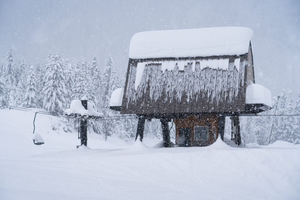
Podcast #83: The Summit at Snoqualmie President and General Manager Guy Lawrence
The Storm Skiing Journal and Podcast
04/20/22 • 95 min
To support independent ski journalism, please consider becoming a free or paid subscriber. Upgrading to a paid subscription is the only way to guarantee access to 100% of The Storm’s content.
NOTE: a few minutes ago, I published a comprehensive breakdown of Summit at Snoqualmie’s 2030 plan, which we discuss at length in this podcast. Click here to view that article, which includes detailed breakdowns of the plan, along with diagrams of the new lift alignments at each ski area.
Who
Guy Lawrence, President and General Manager of The Summit at Snoqualmie, Washington
Recorded on
April 18, 2022
About Summit at Snoqualmie
Click here for a mountain stats overview
Owned by: Boyne Resorts
Base elevation | summit elevation | vertical drop:
Alpental: 3,140 feet | 5,420 feet | 2,280 feet
Summit East: 2,610 feet | 3,710 feet | 1,100 feet
Summit Central: 2,840 feet | 3,865 feet | 1,025 feet
Summit West: 3,000 feet | 3,765 feet | 765 feet
Skiable Acres: 1,994 (600 acres of night skiing)
Alpental: 875 (including back bowls)
Summit East: 385 acres
Summit Central: 474 acres
Summit West: 260 acres
Average annual snowfall: 426 inches (varies by area)
Trail count: 150 (11% expert, 42% advanced, 33% intermediate, 14% beginner)
Terrain parks: 2
Lift count: 24 (3 high-speed quads, 4 fixed-grip quads, 3 triples, 9 doubles, 5 surface lifts - view Lift Blog’s inventory of The Summit at Snoqualmie’s lift fleet)
Trail maps:
Why I interviewed him
What is this wild place, four ski areas in one, scattered about the high ground like wintry little islands 50 miles east of the snowless coastal city? 400 inches of snow and no logic to it at all, dumping at 3,000 feet when the rain line is at 4,000, the Cascade Concrete of legend, except when it isn’t. The funny name and the funny trail map, the ski areas nothing like one another, as confusing a thing as there is in American skiing.
Boyne once owned two ski resorts in Washington. There was Crystal, and then there was this. Whatever this was. Maybe a feeder and maybe something else. And oh wait that’s where Alpental is? Why didn’t they just say that? Crystal is gone (it’s still there), but Boyne held onto this. And now we’re getting a real good sense of what this is.
I don’t know if it was the Ikon Pass or the runaway West Coast tech wealth or the Covid-driven outdoor explosion or the spread-the-word crowdsourcing supernova of social media, but suddenly Summit at Snoqualmie is One Of Those Places That We Talk About. Part of the overrun Washington trio that also includes Crystal and Stevens. The rest of the state’s ski areas are too remote to matter, at least for now, at least in that way. But these three have problems. Traffic problems and parking lot problems and liftline problems and terrain-management problems and, sometimes, too-much-snow-all-at-once problems. They’re all handling them different. Crystal has morphed from Ikon bottom-feeder to $1,699 season pass elitist with intricate parking-and-access policies in just two seasons. Stevens is hoping new management and a higher wage can offset the debilitating crowds driven by season passes that cost the same as one month of Netflix.
And Summit is doing what Boyne does: rethinking and rebuilding the resort to adapt to the modern ski experience. Washington State in 2022 is a tough place to make it as a ski resort, and I wanted to talk to the person in charge of Summit to understand exactly how they planned to do that.
What we talked about
The 2021-22 ski season; potential Summit closing dates; the T-bar ride that changed a life; Australia’s sprawling Perisher ski area; the majesty of European skiing; Vail Mountain; Badger Pass; Booth Creek; Summit and Washington in the homey ‘90s; when skier traffic started to explode; the founding of the four Summit at Snoqualmie ski areas and how they came together into the modern resort; why they’re bucketed as one ski area even though Alpental is separated by Interstate...

1 Listener
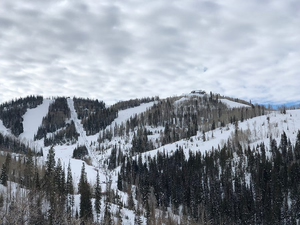
COVID-19 & Skiing Podcast #9: Alterra CEO Rusty Gregory – “We’re Continuing to Strengthen Our Offerings”
The Storm Skiing Journal and Podcast
05/05/20 • 60 min
Download this episode on iTunes, Google Podcasts, Stitcher, TuneIn, and Pocket Casts | Read the full overview at skiing.substack.com.
What this is: This is the ninth in a series of conversations exploring the ski industry fallout from the COVID-19-forced closure of nearly every ski area on the continent in March 2020. Click through to listen to the first eight: author Chris Diamond, Boyne Resorts CEO Stephen Kircher, Magic Mountain President Geoff Hatheway, NSAA CEO Kelly Pawlak, Berkshire East/Catamount Owner & Goggles for Docs founder Jon Schaefer, Shaggy’s Copper Country Skis Cofounder Jeff Thompson, Doppelmayr USA President Katharina Schmitz, Mt. Baldy GM Robby Ellingson
Who: Rusty Gregory, Alterra Mountain Company CEO
Why I interviewed him: Because as skiing has evolved into a megapass-anchored duopoly that has trained consumers to feel entitled to cheap access to as many mountains as possible, the consequences of those large players’ decisions has been amplified considerably. When Vail and Alterra shut down their entire North American networks of nearly 50 ski areas on March 14, the impact reverberated in immediate and wide-ranging ways that would have been difficult to imagine even five years ago. Now, as both step out of the wreckage and try to make good with passholders still fuming about shortened seasons while acknowledging that next season isn’t close to being assured, we are collectively witnessing the kind of real-time business adaptation that normally takes years to occur. How Alterra resets the Ikon Pass now will influence not only how smaller mountains adjust their offerings, but what skiers’ pass expectations will be long after Covid-19 has burned out. Looming over all of this is the possibility that the 2020-21 ski season could be a very dystopian, socially distant affair, with capacity limits and restricted access to just about everything. How Alterra is evolving in the shutdown’s aftermath and preparing for the possibility of a very odd 2020-21 season is one of the most important stories in skiing right now.
Alterra’s Steamboat ski area in February 2020.
What we talked about: How the shutdown progressed and the catalysts behind the ultimate decision to close; how using Crystal Mountain as a laboratory told them social distancing at massive ski areas was unsustainable; the chaos and uncertainty of March 14, which turned out to be shutdown day; the creeping atmosphere of fear in ski towns as the virus spread; the impossible decision of shuttering 15 North American ski resorts in the midst of peak season when hundreds of thousands of skiers are planning on booting up the next day; second-guessing the shutdown decision and how long those doubts lasted; dealing with Angry Ski Bro in the moment; Dude Brah are you really going to shut Squaw when we’re about to get dumped on?; managing thousands of layoffs and furloughs and helping move those who wanted t...
1 Listener
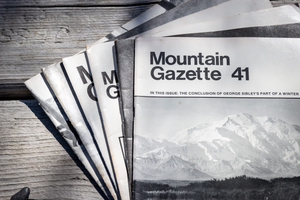
Podcast #20: Mountain Gazette Owner and Editor Mike Rogge
The Storm Skiing Journal and Podcast
07/24/20 • 61 min
The Storm Skiing Podcast #20 | Download this episode on iTunes, Spotify, Google Podcasts, Stitcher, TuneIn, and Pocket Casts | Read the full overview at skiing.substack.com.
Who: Mike Rogge, Owner and Editor of Mountain Gazette
Back issues of Mountain Gazette. Photo by Chris Segal.
Why I interviewed him: Because even as the founder of a publication that lives entirely and eternally online, I have always loved the depth and expressiveness of print media in general and ski magazines in particular. I learned how to ski from fat newsstand-bought issues of the middle- to late-90s, and I learned everything else I knew about skiing there too. When I commenced the series of explosive yardsales and ever-farther roadtrips that constituted my early ski career, I knew almost no one who skied, and certainly no one who had skied the amazing snowy West. The magazines were my Yoda. There were four mainstream publications available in the Midwestern pharmacies and grocery stores of my teens, as indistinguishable as leaves on a tree to passersby, but to me, to a skier, each distinct and vital and alive. Skiing was attitude. Powder was poetry. Ski was groomers. Snow Country, trying to be a little bit of each, felt scrambled. I bought them all. Inside these glossy magazines lay an immense landscape, frantic and relentless and always stomping through snowy netherworlds put suddenly at my reach. They may as well have been tales of Narnia, so absorbing did I find these steeps and snowfields and snow-choked woods, these far-off resorts and the characters that animated them, their legends hardened through writing sharp and piercing and explosive. That’s all so diminished now. Snow Country and Skiing evaporated. Powder is down to four issues per year. Ski survives, but in a massively slimmed-down state. Yes, Freeskier popped out of the glossy halfpipe at some point in the late ‘90s, and it still exists and does good work, though with a diminished print run. While Mountain Gazette has never been explicitly or solely a ski magazine, the publication is an important part of the ski media’s print legacy, and its return – the magazine had two previous print runs, from the ‘60s to 1979 and from 2000 to 2012 – as a high-end, twice-annual expression of modern mountain life is a positive development, and something I wanted to hear more about.
A Mountain Gazette cover from the 1970s. Yes, I chose this one because the kid on the right is rocking a Michigan sweatshirt, but this photo perfectly captures the less-geared-up rambling spirit of the mountain days of yore.
What we talked about: Covid life in Tahoe; remembering the shutdown; Mountain Gazette’s history and legacy as literary journal and freewheeling transmitter of the mountain town zeitgeist; the magazine’s legendary writers and editors and what drew Rogge to them; the failed professional quest that preluded his purchase of Mountain Gazette; how he reacted when he found out the magazine was for sale and how that sale went down; why now is the right time to bring it back to life; the power of a known brand; cultivating a place for explosive and hungry young writers; what you get when you buy a publication; how former readers have reacted to the magazine’s resuscitation; what you do when 50 boxes of archived magazines show up at your house; how to honor a publication’s legacy while pushing its evolution forward; you can help Mike complete his Mountain Gazette collec...
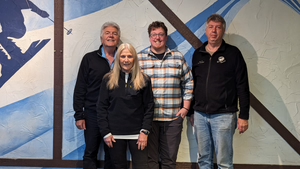
Podcast #174: Blue Knob, Pennsylvania Owners & Management
The Storm Skiing Journal and Podcast
06/11/24 • 95 min
This podcast hit paid subscribers’ inboxes on June 4. It dropped for free subscribers on June 11. To receive future pods as soon as they’re live, and to support independent ski journalism, please consider an upgrade to a paid subscription. You can also subscribe to the free tier below:
Who
Scott Bender, operations and business advisor to Blue Knob ownership
Donna Himes, Blue Knob Marketing Manager
Sam Wiley, part owner of Blue Knob
Gary Dietke, Blue Knob Mountain Manager
Recorded on
May 13, 2024
About Blue Knob
Click here for a mountain stats overview
Owned by: Majority owned by the Wiley family
Located in: Claysburg, Pennsylvania
Year founded: 1963
Pass affiliations: Indy Pass and Indy+ Pass – 2 days, no blackouts (access not yet set for 2024-25 ski season)
Closest neighboring ski areas: Laurel (1:02), Tussey (1:13), Hidden Valley (1:14), Seven Springs (1:23)
Base elevation: 2,100 feet
Summit elevation: 3,172 feet
Vertical drop: 1,072 feet
Skiable Acres: 100
Average annual snowfall: 120 inches
Trail count: 33 (5 beginner, 10 intermediate, 4 advanced intermediate, 5 advanced, 9 expert) + 1 terrain park
Lift count: 5 (2 triples, 2 doubles, 1 carpet – view Lift Blog’s inventory of Blue Knob’s lift fleet)
Why I interviewed them
I’ve not always written favorably about Blue Knob. In a state where shock-and-awe snowmaking is a baseline operational requirement, the mountain’s system is underwhelming and bogged down by antiquated equipment. The lower-mountain terrain – Blue Knob’s best – opens sporadically, sometimes remaining mysteriously shuttered after heavy local snows. The website at one time seemed determined to set the world record for the most exclamation points in a single place. They may have succeeded (this has since been cleaned up):
I’ve always tried to couch these critiques in a but-damn-if-only context, because Blue Knob, considered purely as a ski area, is an absolute killer. It needs what any Pennsylvania ski area needs – modern, efficient, variable-weather-capable, overwhelming snowmaking and killer grooming. No one, in this temperamental state of freeze-thaws and frequent winter rains, can hope to survive long term without those things. So what’s the holdup?
My goal with The Storm is to be incisive but fair. Everyone deserves a chance to respond to critiques, and offering them that opportunity is a tenant of good journalism. But because this is a high-volume, high-frequency operation, and because my beat covers hundreds of ski areas, I’m not always able to gather reactions to every post in the moment. I counterbalance that reality with this: every ski area’s story is a long-term, ongoing one. What they mess up today, they may get right tomorrow. And reality, while inarguable, does not always capture intentions. Eventually, I need to gather and share their perspective.
And so it was Blue Knob’s turn to talk. And I challenge you to find a more good-natured and nicer group of folks anywhere. I went off format with this one, hosting four people instead of the usual one (I’ve done multiples a few times before, with Plattekill, West Mountain, Bousquet, Boyne Mountain, and Big Sky). The group chat was Blue Knob’s idea, and frankly I loved it. It’s not easy to run a ski area in 2024 in the State of Pennsylvania, and it’s especially not easy to run this ski area, for reasons I outline below. And while Blue Knob has been slower to get to the future than its competitors, I believe they’re at least walking in that direction.
What we talked about
“This was probably one of our worst seasons”; ownership; this doesn’t feel like PA; former owner Dick Gauthier’s legacy; reminiscing on the “crazy fun” of the bygone community atop the ski hill; Blue Knob’s history as an Air Force station and how the mountain became...
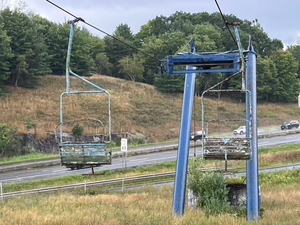
Podcast #193: Holiday Mountain, New York Owner Mike Taylor
The Storm Skiing Journal and Podcast
12/07/24 • 84 min
This podcast hit paid subscribers’ inboxes on Nov. 30. It dropped for free subscribers on Dec. 7. To receive future episodes as soon as they’re live, and to support independent ski journalism, please consider an upgrade to a paid subscription. You can also subscribe to the free tier below:
Who
Mike Taylor, Owner of Holiday Mountain, New York
Recorded on
November 18, 2024
About Holiday Mountain
Click here for a mountain stats overview
Owned by: Mike Taylor
Located in: Monticello, New York
Year founded: 1957
Pass affiliations: None
Closest neighboring ski areas: Villa Roma (:37), Ski Big Bear (:56), Mt. Peter (:48), Mountain Creek (:52), Victor Constant (:54)
Base elevation: 900 feet
Summit elevation: 1,300 feet
Vertical drop: 400 feet
Skiable acres: 60
Average annual snowfall: 66 inches
Trail count: 9 (5 beginner, 2 intermediate, 2 advanced)
Lift count: 3 (1 fixed-grip quad, 1 triple, 1 carpet - view Lift Blog’s inventory of Holiday Mountain’s lift fleet)
Why I interviewed him
Not so long ago, U.S. ski areas swung wrecking ball-like from the necks of founders who wore them like amulets. Mountain and man fused as one, each anchored to and propelled by the other, twin forces mirrored and set aglow, forged in some burbling cauldron and unleashed upon the public as an Experience. This was Killington and this was Mammoth and this was Vail and this was Squaw and this was Taos, each at once a mountain and a manifestation of psyche and soul, as though some god’s hand had scooped from Pres and Dave and Pete and Al and Ernie their whimsy and hubris and willfulness and fashioned them into a cackling live thing on this earth. The men were the mountains and the mountains were the men. Everybody knew this and everybody felt this and that’s why we named lifts and trails after them.
This is what we’ve lost in the collect-them-all corporate roll-up of our current moment. I’m skeptical of applying an asteroid-ate-the-dinosaurs theory to skiing, but even I’ll acknowledge this bit. When the caped founder, who stepped into raw wilderness and said “here I will build an organized snowskiing facility” and proceeded to do so, steps aside or sells to SnowCo or dies, some essence of the mountain evaporates with him. The snow still hammers and the skiers still come and the mountain still lets gravity run things. The trails remain and the fall lines still fall. The mountain is mostly the same. But nobody knows why it is that way, and the ski area becomes a disembodied thing, untethered from a human host.
This, I think, is a big part of the appeal of Michigan’s Mount Bohemia. Ungroomed, untamed, absent green runs and snowguns, accessible all winter on a $109 season pass, Boho is the impossible storybook of the maniac who willed it into existence against all advice and instinct: Lonie Glieberman, who hacked this thing from the wilderness not in some lost postwar decade, but in 2000. He lives there all winter and everybody knows him and they all know that this place that is the place would not exist had he not insisted that it be so. For the purposes of how skiers consider the joint, Lonie is Mount Bohemia. And someday when he goes away the mountain will make less sense than it does right now.
I could write a similar paragraph about Chip Chase at White Grass Touring Center in West Virginia. But there aren’t many of those fellas left. Since most of our ski areas are old, most of our founders are gone. They’re not coming back, and we’re not getting more ski areas. But that doesn’t mean the era of the owner-soul keeper is finished. They just need to climb a different set of monkey bars to get there. Rather than trekking into the mountains to stake out and transform a raw wilderness into a piste digestible to the masses, the modern mountain incarnate needs to drive up to the ski area with a dump truck full of hundred dollar bills, pour it out onto the ground, and hope the planted seeds sprout money trees.
And this is Mike Taylor. He has resources. He has energy. He has manpower. And he’s going to transform t...
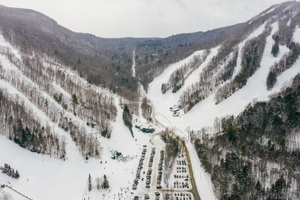
Podcast #135: Dartmouth Skiway GM Mark Adamczyk
The Storm Skiing Journal and Podcast
07/11/23 • 74 min
This podcast hit paid subscribers’ inboxes on July 8. It dropped for free subscribers on June 11. To receive future pods as soon as they’re live, and to support independent ski journalism, please consider an upgrade to a paid subscription. You can also subscribe for free below:
Who
Mark Adamczyk, General Manager of Dartmouth Skiway, New Hampshire
Recorded on
June 12, 2023
About Dartmouth Skiway
Click here for a mountain stats overview
Owned by: Dartmouth College
Located in: Lyme Center, New Hampshire
Year founded: 1956
Pass affiliations:
No Boundaries Pass: between 1 and 3 days, depending upon when the pass is redeemed
Indy Pass Allied Resorts: Indy Pass holders get 50 percent off weekday lift tickets and 25 percent off weekends and holidays
Reciprocal partners: None
Closest neighboring ski areas: Storrs Hill (33 minutes), Whaleback (36 minutes), Northeast Slopes (36 minutes), Harrington Hill (41 minutes), Quechee (42 minutes), Ragged (48 minutes), Tenney (53 minutes), Saskadena Six (54 minutes), Ascutney (55 minutes), Arrowhead (59 minutes), Mount Sunapee (59 minutes), Veterans Memorial (1 hours, 6 minutes), Campton (1 hour, 6 minutes), Kanc (1 hour, 10 minutes), Loon (1 hour, 11 minutes), Waterville Valley (1 hour, 17 minutes), Cannon (1 hour, 17 minutes), Killington (1 hour, 20 minutes), Pico (1 hour, 21 minutes), Okemo (1 hour, 22 minutes)
Base elevation: 968 feet
Summit elevation: 1,943 feet
Vertical drop: 968 feet
Skiable Acres: 104
Average annual snowfall: 100 inches
Trail count: 28 (25% advanced/expert, 50% intermediate, 25% beginner)
Lift count: 4 (1 fixed-grip quad, 1 double, 2 carpets – view Lift Blog’s inventory of Dartmouth Skiway’s lift fleet)
Why I interviewed him
Isn’t it interesting what exists? Imagine if Yale or Dartmouth or hell the University of Vermont wanted to build a ski area today. They’d have better luck genetically splicing a goat with an Easter egg. Or building a Chuck E. Cheese on Jupiter. Or sealing the Mariana Trench with toothpaste. Imagine the rage from alumni, from the Leaf Defenders, from whatever town they decided to slice the forest up over. U.S. American colleges collectively acting as the NFL’s minor league while piling up millions in broadcast and ticket revenue – totally fine. A college owning a ski area? What are you, insane?
But here we are: Dartmouth College owns a ski area. The origin story, in my imagination: Eustacious VonTrappenSquire VIII, president of Dartmouth and also Scout Emeritus of his local outing club, orders his carriage driver to transport him up to Lyme, where he intends to stock up on parchment and whale oil. As he waits for the apothecary to mix his liver tonic, the old chum takes a draw from his pipe and, peering through his spectacle, spies Holt’s Ledge and Winslow Ledge rising more than 2,100 feet off the valley floor. “Charles, good fellow, the next time you draw up the horses, be a swell and throw my old snowskis into the carriage. I fancy a good ski on those two attractive peaks yonder.” He then loads his musket and shoots a passenger pigeon mid-flight.
“But Sir,” Charles replies, “I’m afraid there’s no trails cut for snow-skiing on those peaks.”
“Well by gum we’ll see about that!” the esteemed president shouts, startling one of the horses so badly that it bolts into Ms. McHenry’s salon and knocks over her spittoon. VonTrappenSquire, humiliated, repays her by making McHenry Dartmouth Skiway’s first general manager.
Unfortunately for my imagination, the actual story is provided in Skiway: A Dartmouth Winter Tale by Everett Wood (sourced from the Skiway’s website):
With its northern New England location and an active Outing Club, Dartmouth College was “the collegiate champion of the outdoor life and winter sports” in the early 1900s. A number of men skied for the United States in the 1936 Winter Olympics in Germany, an amazing feat given that their local ski hills were what is today the Hanover Country Club.
In April 1955, a report, spearheaded by John Meck ’33 entitled, “Development of Adequate Skiing Facilities for Dartmouth S...
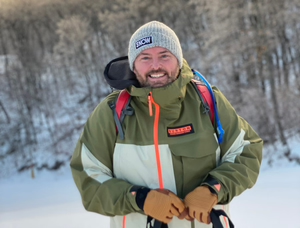
Podcast #91: Snow Partners (Big Snow, Mountain Creek) CEO Joe Hession
The Storm Skiing Journal and Podcast
06/22/22 • -1 min
To support independent ski journalism, please consider becoming a free or paid subscriber. Paid subscribers receive thousands of extra words of content each month, plus all podcasts three days before free subscribers.
Who
Joe Hession, CEO of Snow Partners, owners of Mountain Creek, Big Snow American Dream, Snowcloud, and Terrain Based Learning
Recorded on
June 15, 2022
About Mountain Creek
Located in: Vernon Township, New Jersey
Closest neighboring ski areas: National Winter Activity Center, New Jersey (6 minutes); Mount Peter, New York (24 minutes); Campgaw, New Jersey (51 minutes); Big Snow American Dream (50 minutes)
Pass affiliations: None
Base elevation: 440 feet
Summit elevation: 1,480 feet
Vertical drop: 1,040 feet
Skiable Acres: 167
Average annual snowfall: 65 inches
Trail count: 46
Lift count: 9 (1 Cabriolet, 2 high-speed quads, 2 fixed-grip quads, 1 triple, 1 double, 2 carpets – view Lift Blog’s inventory of Mountain Creek’s lift fleet)
About Big Snow American Dream
Located in: East Rutherford, New Jersey
Closest neighboring ski areas: Campgaw, New Jersey (35 minutes); National Winter Activity Center, New Jersey (45 minutes); Mountain Creek, New Jersey (50 minutes); Mount Peter, New York (50 minutes)
Pass affiliations: None
Vertical drop: 118 feet
Skiable Acres: 4
Average annual snowfall: 0 inches
Trail count: 4 (2 green, 1 blue, 1 black)
Lift count: 4 (1 quad, 1 poma, 2 carpets - view Lift Blog’s of inventory of Big Snow American Dream’s lift fleet)
Why I interviewed him
Twenty-five years ago, Vail Resorts was known as “Vail Associates.” The company owned just two mountains: Vail and Beaver Creek, which are essentially right next door to each other in Eagle County, Colorado. The resorts were, as they are today, big, snowy, and fun. But they were not great businesses. Bankruptcy threatened. And the ski media – Skiing, Powder – was mostly dismissive. This was the dawn of the freeskiing era, and the cool kids were running the Circuit of Radness: Snowbird, Squaw, Mammoth, Jackson Hole, Whistler, the Powder Highway. Vail was for suburban dads from Michigan. Beaver Creek was for suburban dads from New York. If you wanted the good stuff, keep moving until you got to Crested Butte or Telluride. Vail was just another big Colorado ski resort, that happened to own another big Colorado ski resort, and that was it.
Today, Vail is the largest ski company in history, with (soon to be) 41 resorts scattered across three continents. Its Epic Pass transformed and stabilized the industry. It is impossible to talk about modern lift-served North American skiing without talking about Vail Resorts.
There was nothing inevitable about this. Pete Seibert, Vail’s founder, did not enter skiing with some snowy notion of Manifest Destiny. He just wanted to open a great ski resort. It was 18 years from Vail Mountain’s 1962 opening to the opening of Beaver Creek in 1980. It was nearly two more decades until Vail bought Keystone and Breck in 1997. It was 11 more years until the Epic Pass debuted, and a few more before anyone started to pay attention to it.
What Snow Partners, led by Joe Hession, is doing right now has echoes of Vail 15 years ago. They are building something. Quietly. Steadily. Like trees growing in a forest. They rise slowly but suddenly they tower over everything.
I’m not suggesting that Snow Partners will be the next Vail. That they will buy Revelstoke and Jackson Hole and Alta and launch the Ultimo Pass to compete with Epic and Ikon. What Snow Partners is building is different. Additive. It will likely be the best thing to ever happen to Vail or Alterra. Snow Partners is not digital cameras, here to crush Kodak. They are, rather, skiing’s Ben Franklin, who believed every community in America ...
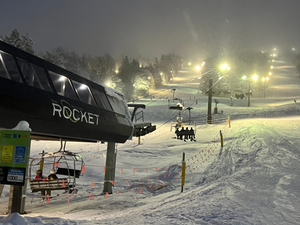
Podcast #192: Mount Sunapee GM (and former Crotched GM) Susan Donnelly
The Storm Skiing Journal and Podcast
12/06/24 • 76 min
This podcast hit paid subscribers’ inboxes on Nov. 29. It dropped for free subscribers on Dec. 6. To receive future episodes as soon as they’re live, and to support independent ski journalism, please consider an upgrade to a paid subscription. You can also subscribe to the free tier below:
Who
Susan Donnelly, General Manager of Mount Sunapee (and former General Manager of Crotched Mountain)
Recorded on
November 4, 2024
About Crotched
Click here for a mountain stats overview
Owned by: Vail Resorts, which also owns:
Located in: Francetown, New Hampshire
Year founded: 1963 (as Crotched East); 1969 (as Onset, then Onset Bobcat, then Crotched West, now present-day Crotched); entire complex closed in 1990; West re-opened by Peak Resorts in 2003 as Crotched Mountain
Pass affiliations:
Epic Pass, Epic Local Pass, Northeast Value Epic Pass: unlimited access
Northeast Midweek Epic Pass: midweek access, including holidays
Closest neighboring public ski areas: Pats Peak (:34), Granite Gorge (:39), Arrowhead (:41), McIntyre (:50), Mount Sunapee (:51)
Base elevation: 1,050 feet
Summit elevation: 2,066 feet
Vertical drop: 1,016
Skiable Acres: 100
Average annual snowfall: 65 inches
Trail count: 25 (28% beginner, 40% intermediate, 32% advanced)
Lift count: 5 (1 high-speed quad, 1 fixed-grip quad, 1 triple, 1 double, 1 surface lift – view Lift Blog’s inventory of Crotched’s lift fleet)
History: Read New England Ski History’s overview of Crotched Mountain
About Mount Sunapee
Click here for a mountain stats overview
Owned by: The State of New Hampshire; operated by Vail Resorts, which also operates resorts detailed in the chart above.
Located in: Newbury, New Hampshire
Year founded: 1948
Pass affiliations:
Epic Pass, Epic Local Pass, Northeast Value Epic Pass: unlimited access
Northeast Midweek Epic Pass: midweek access, including holidays
Closest neighboring public ski areas: Pats Peak (:28), Whaleback (:29), Arrowhead (:29), Ragged (:38), Veterans Memorial (:42), Ascutney (:45), Crotched (:48), Quechee (:50), Granite Gorge (:51), McIntyre (:53)
Base elevation: 1,233 feet
Summit elevation: 2,743 feet
Vertical drop: 1,510 feet
Skiable Acres: 233 acres
Average annual snowfall: 130 inches
Trail count: 67 (29% beginner, 47% intermediate, 24% advanced)
Lift count: 8 (2 high-speed quads, 1 fixed-grip quad, 2 triples, 3 conveyors – view Lift Blog’s inventory of Mount Sunapee’s lift fleet.)
History: Read New England Ski History’s overview of Mount Sunapee
Why I interviewed her
It’s hard to be small in New England and it’s hard to...
Show more best episodes

Show more best episodes
FAQ
How many episodes does The Storm Skiing Journal and Podcast have?
The Storm Skiing Journal and Podcast currently has 224 episodes available.
What topics does The Storm Skiing Journal and Podcast cover?
The podcast is about Leisure, Podcasts, Sports and Wilderness.
What is the most popular episode on The Storm Skiing Journal and Podcast?
The episode title 'Podcast #82: Arapahoe Basin Chief Operating Officer Alan Henceroth' is the most popular.
What is the average episode length on The Storm Skiing Journal and Podcast?
The average episode length on The Storm Skiing Journal and Podcast is 78 minutes.
How often are episodes of The Storm Skiing Journal and Podcast released?
Episodes of The Storm Skiing Journal and Podcast are typically released every 6 days, 23 hours.
When was the first episode of The Storm Skiing Journal and Podcast?
The first episode of The Storm Skiing Journal and Podcast was released on Oct 13, 2019.
Show more FAQ

Show more FAQ